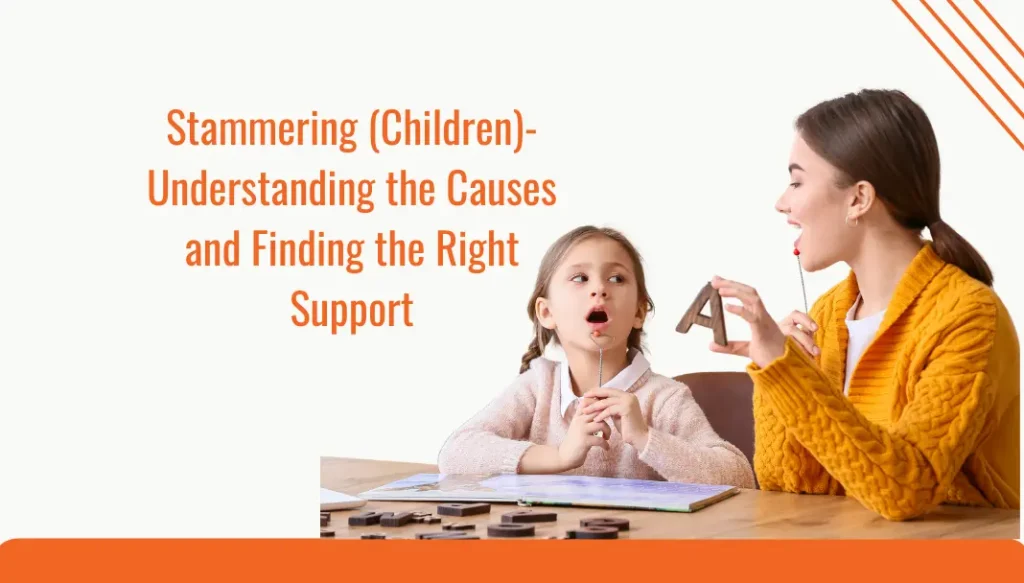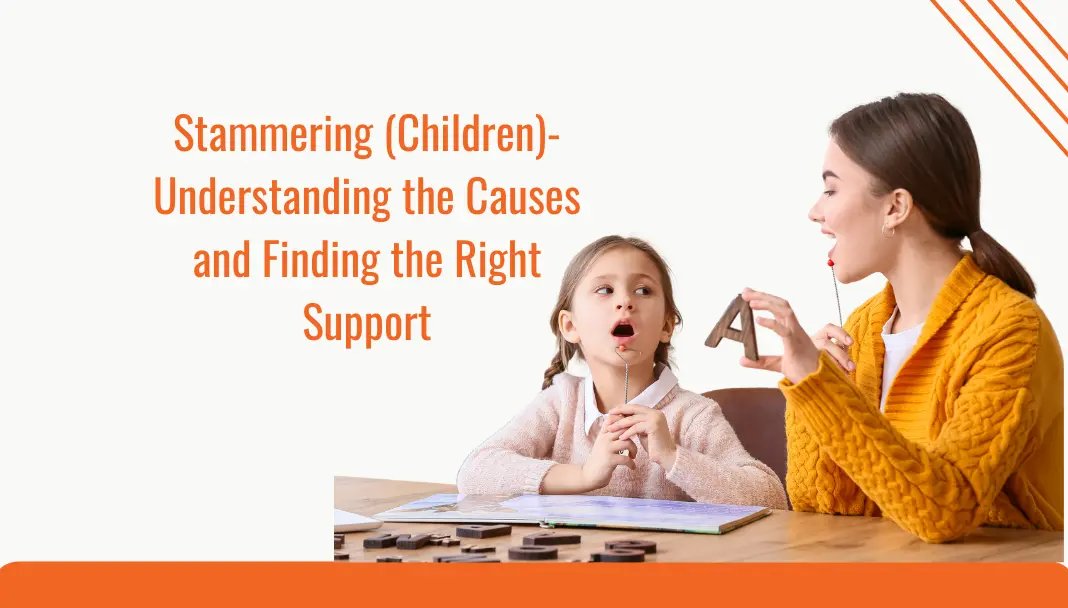As a parent, seeing your child struggle to express themselves can be incredibly upsetting. If your little one repeats sounds, hesitates mid-sentence, or seems frustrated while trying to speak, you might be dealing with something more than just a speech delay.
Stammering or stuttering is more common than many realise, and for children, it can be both confusing and distressing.
In this blog, we will understand in depth what causes a stammer in a child and, more importantly, how we can help stop stuttering before it affects their confidence. In this blog, we will understand in depth what causes a stammer in a child and, more importantly, how we can help stop stuttering before it affects their confidence.
What Is Stammering?
Stammering is a kind of speech disorder that disrupts the natural flow of talking. It may involve repeating sounds or syllables (like “m-m-mum”), stretching out a sound, or getting stuck on a word altogether. Some children also show physical signs of tension, such as blinking or facial tightening, as they try to get the words out.
It usually appears between the ages of 2 and 5, just as children’s language skills are expanding rapidly.
For many, it’s a temporary phase. But for others, especially when the stammer continues beyond six months or worsens with time, it may need professional support.
What Causes a Stammer in a Child?
Several factors are thought to play a role in causing stammering:
Several factors are thought to play a role in causing stammering:
1. Family History
If there’s a family history of stammering, your child might be more likely to develop it. Many children who stammer have a close relative who has struggled with speech in some way.
2. Speech and Language Development
Children who begin talking later or have other speech delays may be more prone to stammering. Their developing speech may not quite keep up with the thoughts they want to express.
3. Brain Processing
Research suggests that in some children who stammer, the brain processes speech and language a little differently. These subtle differences may affect how smoothly speech muscles are coordinated.
4. Emotional or Environmental Triggers
Although emotions don’t directly cause stammering, stressful situations, fast-paced conversations, or pressure to “speak properly” can make it worse.
A child when becomes more self-conscious, can create a cycle of anxiety and speech disruption.
Spotting the Signs Early
Sometimes, a stammer begins gradually, and other times it seems to appear overnight. Signs to look out for include:
- Frequent repetition of sounds, syllables, or words
- Pauses or blocks where the child seems stuck
- Prolonging certain sounds
- Frustration or visible effort while speaking
- Avoiding speaking in certain situations
If you regularly observe these behaviors, it’s best to seek guidance early rather than wait for the issue to resolve itself.
How to Stop Stuttering in Children: Practical Ways to Help
There’s no magic cure, but the good news is that there are many ways to support your child and ease their journey to fluent speech.
1. Stay Calm and Patient
Children often mirror their environment. When you speak slowly and calmly, it encourages them to do the same. Rushing them or finishing their sentences even with the best of intentions, can increase pressure and frustration.
2. Create a Safe Space for Speaking
Give your child your full attention when they speak. Make eye contact, listen without interrupting, and show genuine interest in what they’re saying, not how they’re saying it. This helps them feel valued and understood.
3. Use Gentle, Unhurried Speech
Rather than telling your child to “slow down,” show them how it’s done. Speak in a relaxed tone and pace. This makes a comfortable rhythm they can follow without stress.
4. Build Confidence in Everyday Moments
Encourage your child to indulge in activities that they enjoy and excel in, like drawing, storytelling, or playing outside.
Appreciating their efforts and celebrating their strengths boosts self-esteem, indirectly
supporting speech development.
5. Seek Professional Support Early
If your child’s stammer lasts more than a few months or if they seem upset by it, a speech and language therapist can help. Therapy doesn’t just focus on fluency; it also helps children feel confident, understood, and in control of their voice.
When to Get Help
It’s time to speak with a professional if:
- The stammer continues beyond six months
- It worsens or becomes more noticeable
- Your child avoids speaking or seems anxious about it
- There is a family history of stammering
Speech therapy can be a game-changer. The earlier the intervention, the better the outcomes usually are.
Take the First Step with Neuropedia: Helping Your Child Speak with Confidence
Stammering doesn’t define your child; it’s just one part of their story. With the right guidance, support, and patience, most children go on to speak clearly and confidently. As parents, your role in creating a supportive environment and seeking help early can make all the difference in supporting their growing years.
Neuropedia understands how important it is to intervene early to address stammering. An advanced team of pediatric neurologists and speech-language specialists offers evidence-based therapies tailored to your child’s individual needs.
Don’t wait further!
Book a consultation with Neuropedia today and give your child the freedom to communicate freely and confidently.











 04 343 1113
04 343 1113 info@neuropedia.ae
info@neuropedia.ae







.png)







